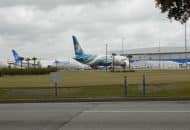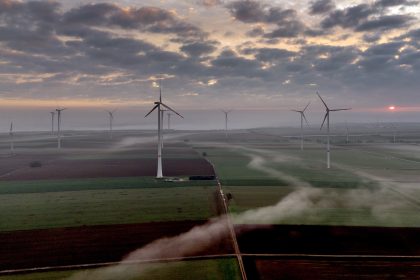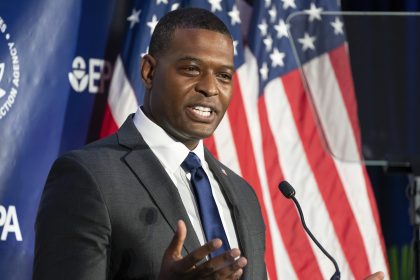Renewable Integration Study Highlights Opportunities for a Coordinated Low-Carbon Grid

With a series of reports released last Thursday by the National Renewable Energy Laboratory, the North American Renewable Integration Study aims to inform grid planners, utilities, industry, policymakers, and other stakeholders about challenges and opportunities for continental system integration of large amounts of wind, solar, and hydropower to support a low-carbon future grid. The NARIS project began in 2016.
“We used a suite of models to study a range of future scenarios and gain insights—including potential impacts on costs, emissions, resource adequacy, and the specific technologies that help enable the transition,” said Greg Brinkman, NREL energy analysis engineer and principal investigator for NARIS. “Our analysis focused in particular on the potential role of cooperation across North America and between regions within each country, and how transmission can support sharing of supply and demand diversity across the continent.”
NREL has released a report on the U.S. perspective in coordination with the U.S. Department of Energy, and a companion report describing a Canadian perspective in coordination with Natural Resources Canada.
Results show that a future low-carbon North American grid can be achieved through multiple pathways that can balance supply and demand using a variety of flexible resources. The study also shows that increasing electricity trade and expanding transmission could have significant benefits, highlighting opportunities for a coordinated, low-carbon continental grid.
First-of-a-Kind Power System Modeling for the Entire Continent
With input from the NARIS Technical Review Committee, NREL developed and evaluated a set of four scenarios to understand the impacts of future renewable technology costs, emission constraints, and growth in electricity demand on key study outcomes. The scenarios were informed by the goals set in 2016 for the Paris Agreement in each country, with up to 80% carbon reductions continent-wide by mid-century.
“NARIS builds on decades of previous work studying power systems with high levels of renewable generation,” Brinkman said. “Here, we analyzed the entire continent in detail while studying higher renewable generation than these previous studies.”
Four key findings emerged from the analysis.
Multiple Pathways Can Lead to 80% Power-Sector Carbon Reduction Continent-Wide by 2050
Steeper cost reduction of wind and solar technologies can lead to a faster and less costly transition, and carbon targets can still be achieved with conservative wind and solar cost assumptions. When it comes to total system costs of achieving 80% power-sector emissions reductions, wind and solar cost trajectories have a more significant impact than carbon policy assumptions.
The Future Low-Carbon Power System Can Balance Supply and Demand in a Wide Range of Future Conditions
For each core NARIS scenario, NREL estimated the number of hours in a year where supply would not be expected to meet demand in a region, as well as shortages that may occur due to generator or transmission outages. For both the United States and Canada, these metrics compare favorably with the North American Energy Reliability Corporation’s projections for the contemporary grid, meaning the scenarios analyzed in NARIS would not fundamentally impact the power system’s ability to balance supply and demand.
In the United States, between 1,200 and 2,000 gigawatts of renewable energy can be deployed to produce 70%–80% of U.S. electricity by 2050 while meeting planning reserve requirements. Thermal generation (nuclear, gas, and coal) contributes significantly to the future power system’s ability to balance supply and demand in all scenarios, even when most of the energy generation comes from wind and solar. Storage can also help provide capacity to the system.
Interregional and International Cooperation Can Provide Significant Net System Benefits Through 2050
Allowing international transmission expansion provides $10 billion to $30 billion (2018 $US) of net value to the continental system between 2020 and 2050 in all but the business-as-usual case—the most conservative of the core scenarios. This demonstrates some of the potential benefits of international collaboration.
Expanding transmission between regions of a country provides $60 billion to $180 billion in net system benefits. Although these values are a small percentage (less than 4%) of the total $5 trillion to $8 trillion total system costs (which include all capital and operating generation and transmission system costs), transmission plays an important role in minimizing costs.
“Transmission expansion benefits are higher with more electrification and more wind and solar, which is a trend that could continue in lower-carbon scenarios or longer-term futures,” said Josh Novacheck, NREL electricity system research engineer and coauthor of the study. ”
Operational Flexibility Comes From Transmission, Storage, and Flexible Operation of All Generator Types
The results show the future low-carbon power system will benefit from many different forms of operational flexibility. In the United States, this includes flexible operation of natural gas and hydropower, curtailment (i.e., purposeful reduction) of wind and solar generation, and storage (mostly pumped storage hydropower). International imports, enabled by transmission buildouts, also help to balance the grid.
Hydropower provides a zero-carbon source of energy, capacity, and flexibility to the grid. In comparing similar scenarios with and without the ability to adjust power output from U.S. and Canadian hydropower generators, annual system costs are $2.3 billion higher without this flexibility.
“In addition to highlighting several opportunities for a coordinated, continental low-carbon grid, NARIS created open-sourced data and methods for future studies to build on,” Novacheck said. “We also identified several priorities for future research to expand on our findings.”
Follow-on work could focus on studying the stability aspect of power system reliability, analyzing new scenarios that reflect today’s emissions reduction goals as well as technology costs, understanding the impact of different market structures on building new transmission and generation, and refining how we model electricity demand patterns and sources of flexibility under future widespread electrification.Primary funding for the U.S. and Canadian reports was provided by Natural Resources Canada and the DOE Office of Energy Efficiency and Renewable Energy’s Wind Energy Technologies Office, Water Power Technologies Office, and Solar Energy Technologies Office.
























